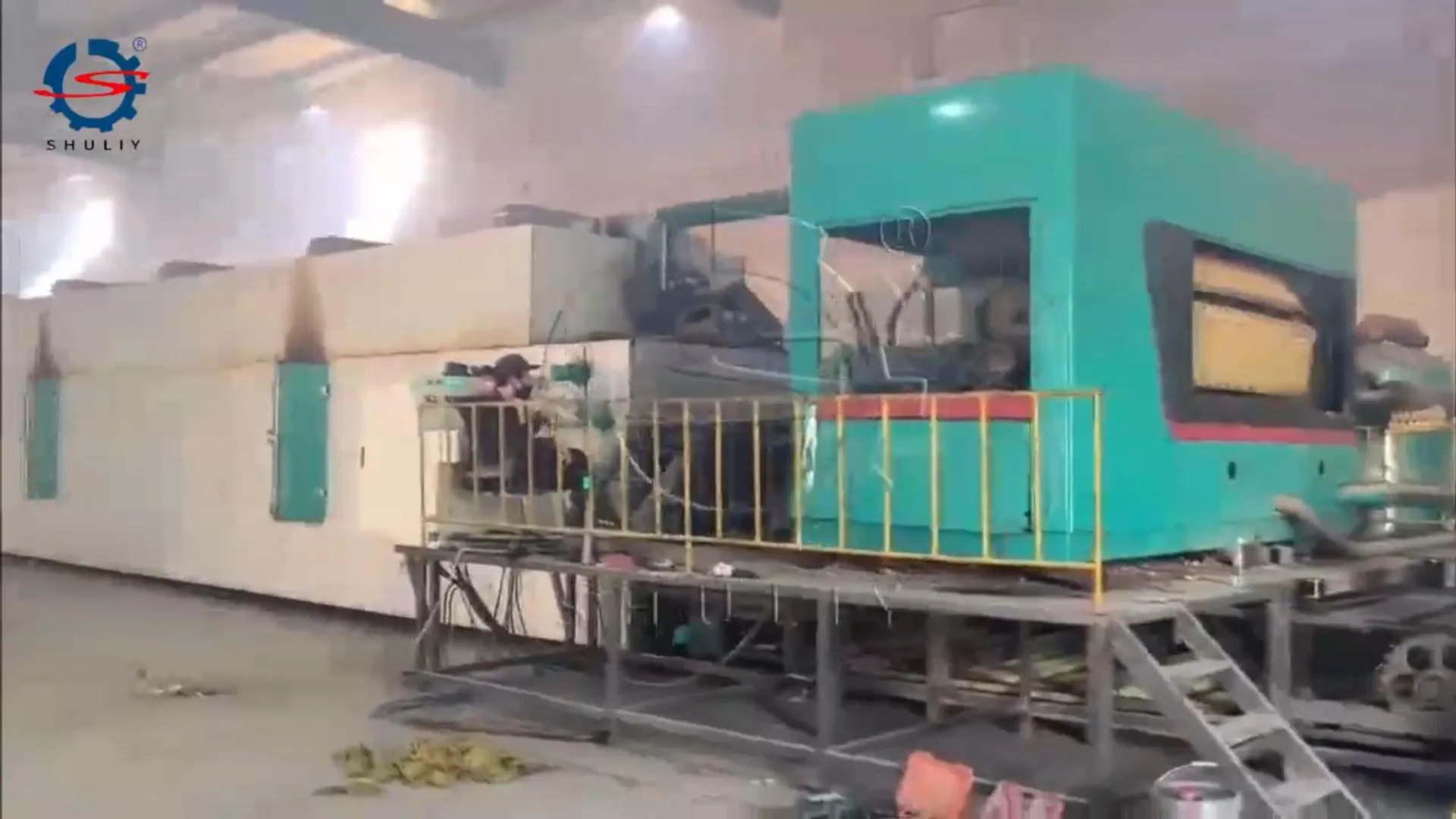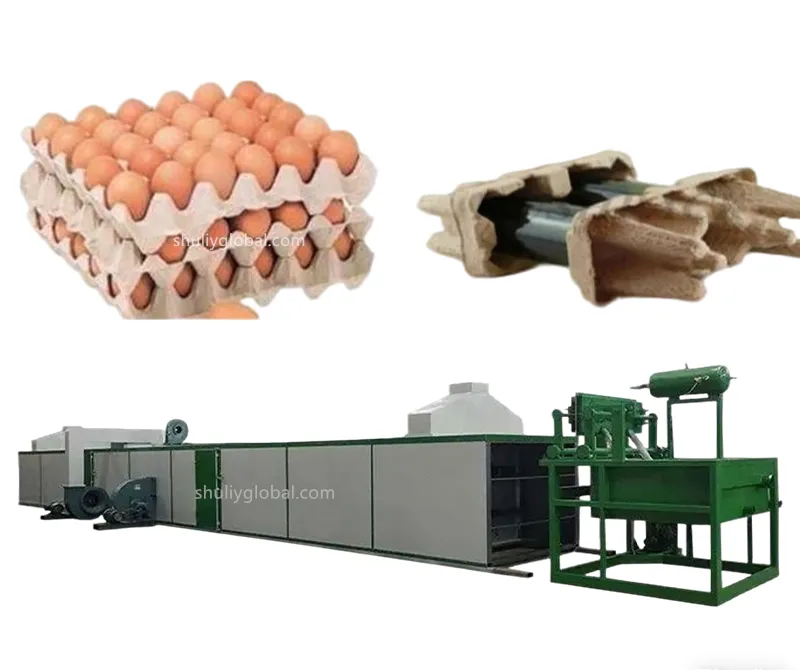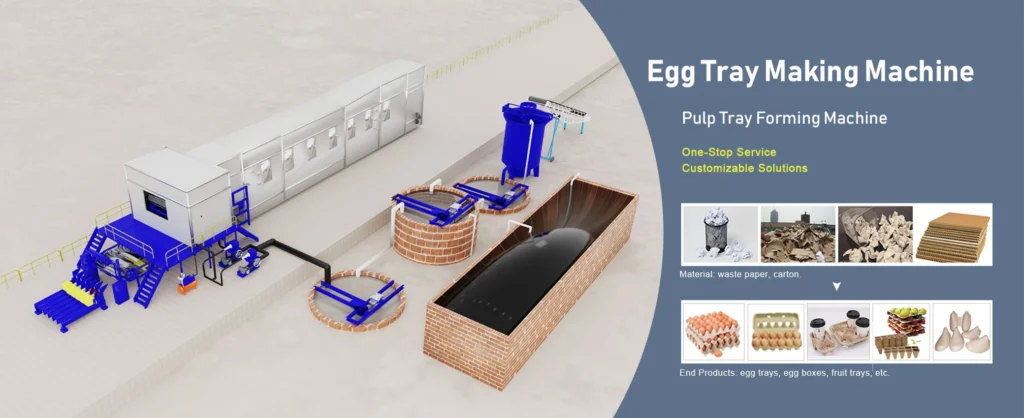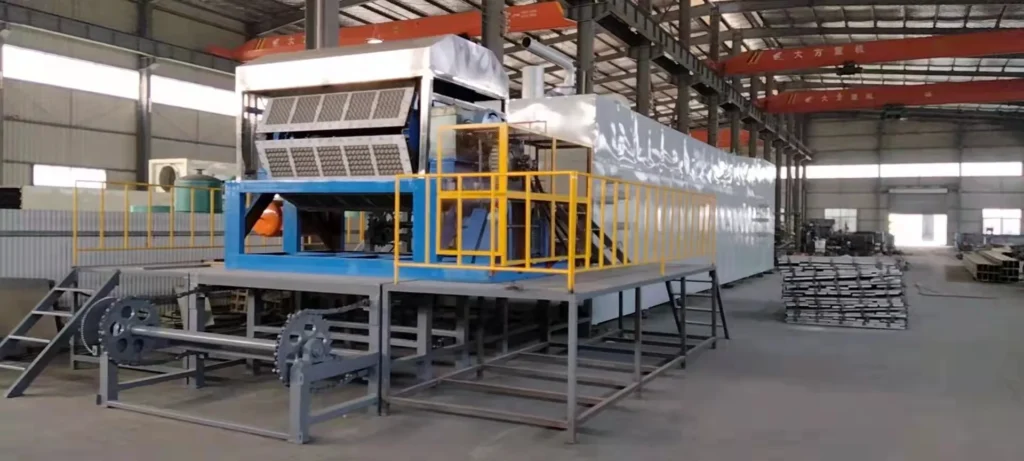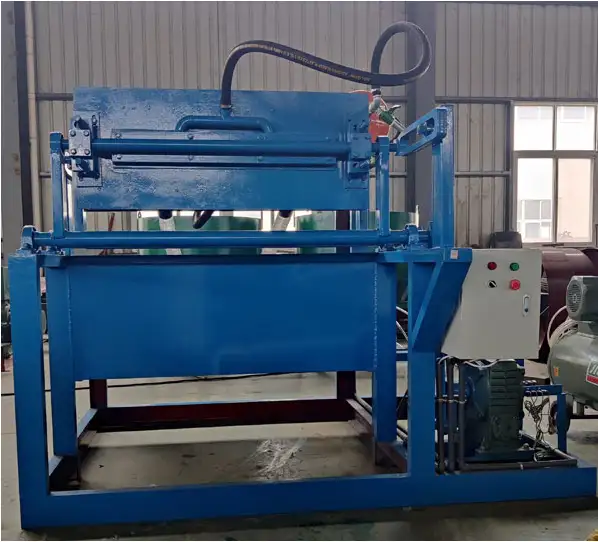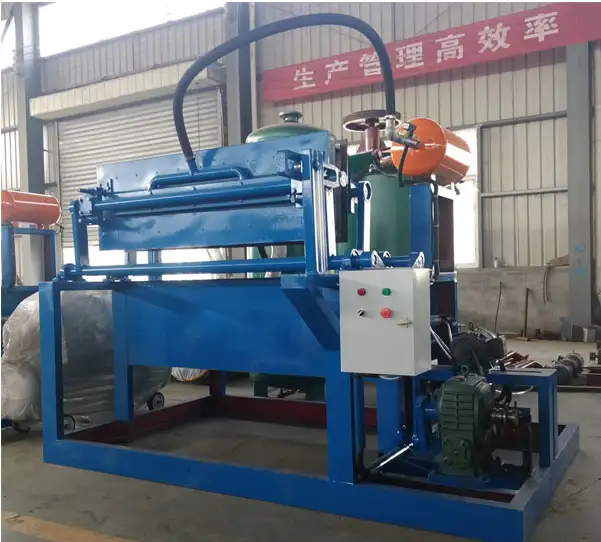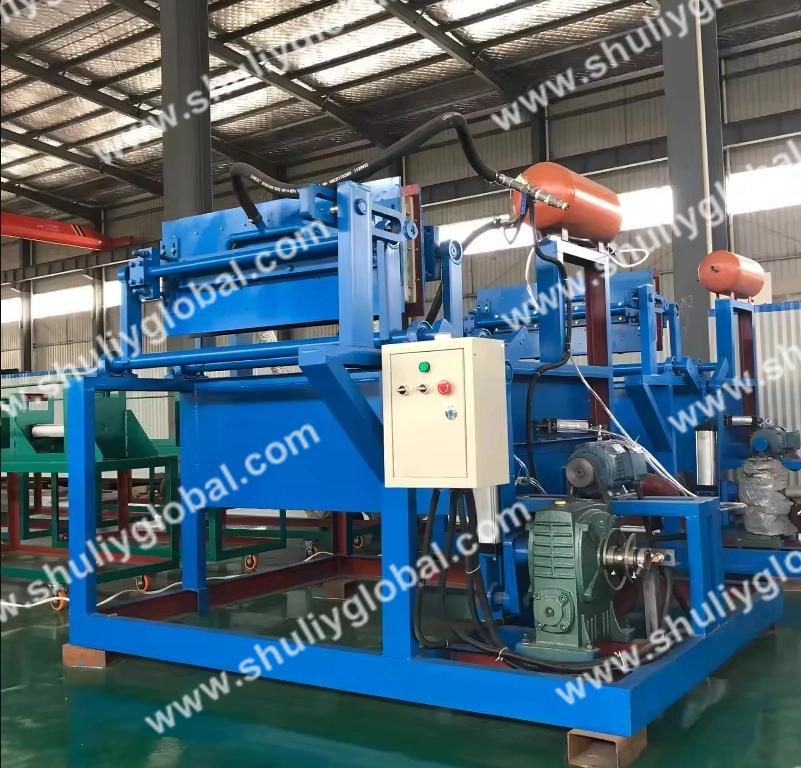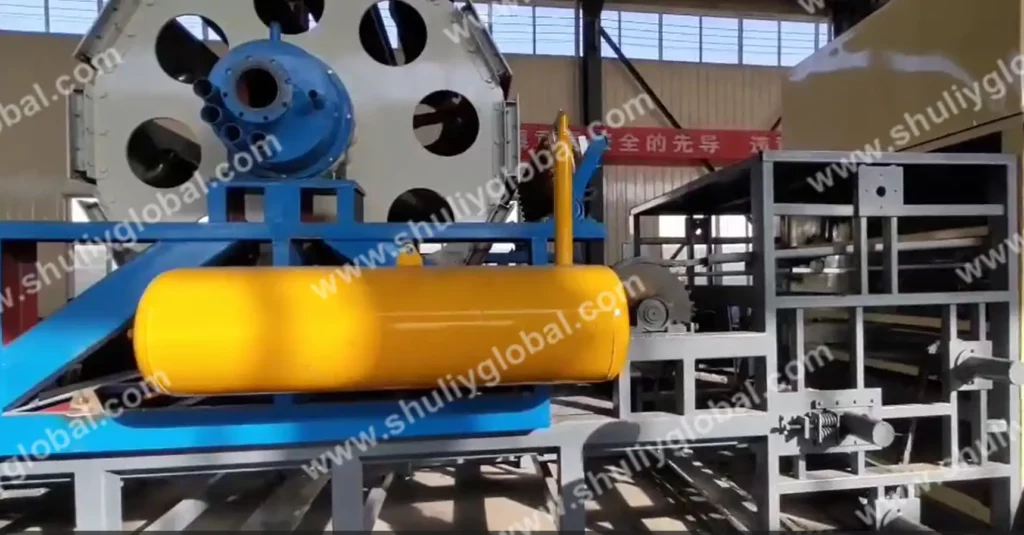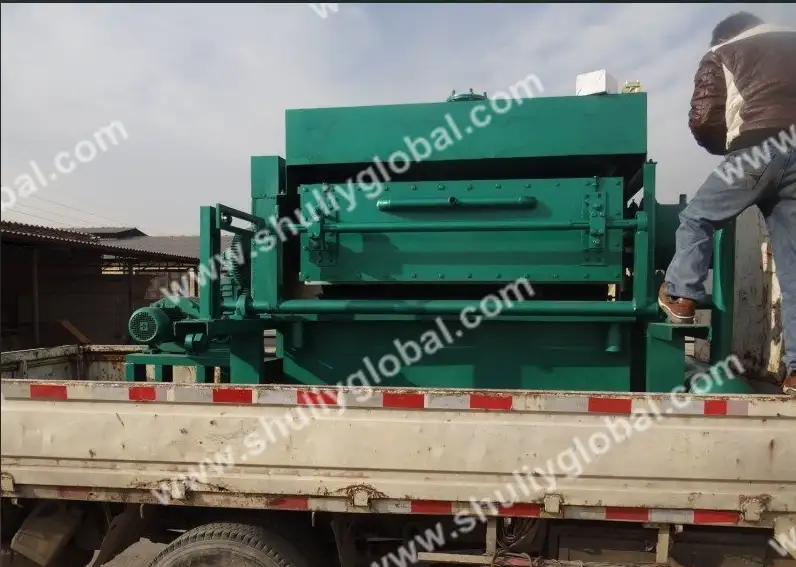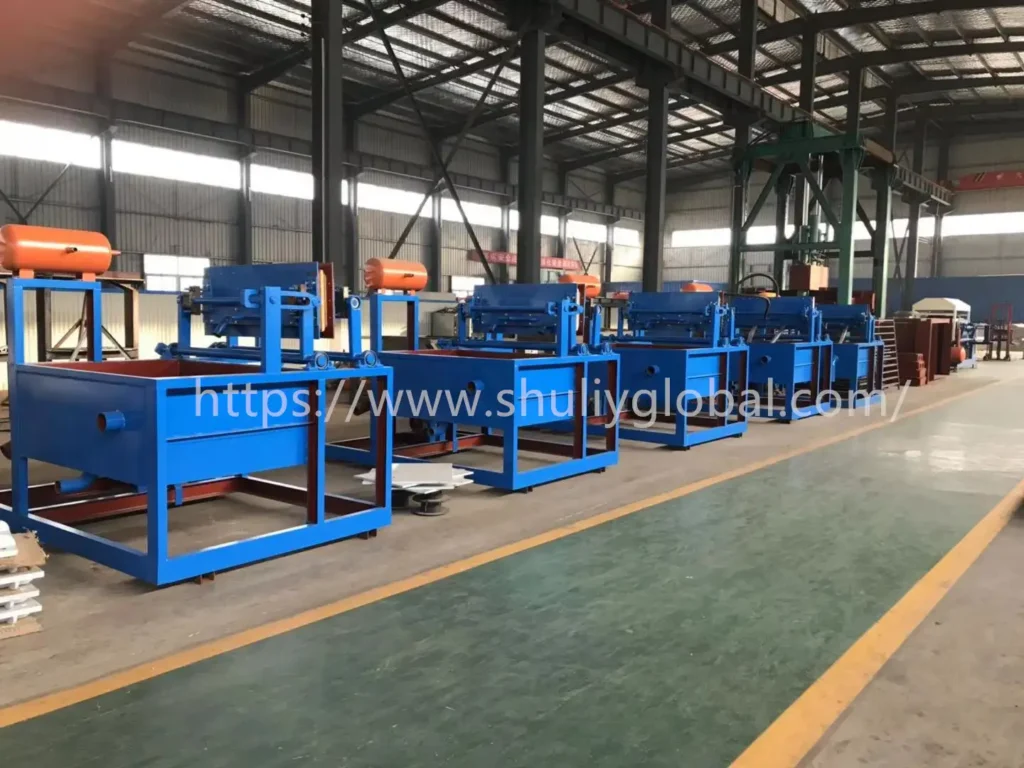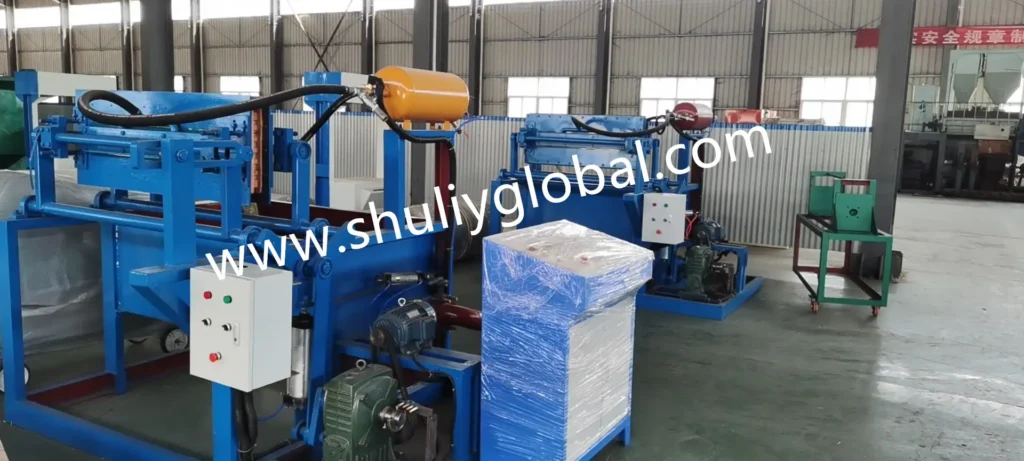In the modern poultry and egg processing industry, egg tray metal dryers play a vital role. This specialized equipment uses a highly efficient hot air circulation system to quickly remove moisture from the egg tray surface, ensuring that the trays remain dry and hygienic during packaging and transportation. With increasing food safety requirements, egg tray dryer technology continues to innovate, providing more energy-efficient and environmentally friendly solutions for the poultry and egg industry.
How an Egg Tray Metal Dryer Works
Egg tray metal dryers utilize forced convection heating. Air is heated using electric or steam heating, and then a high-efficiency fan evenly distributes the hot air over the egg tray surface. The hot air exchanges heat with moisture on the tray surface, evaporating the moisture and discharging it through a dehumidification system. The equipment typically features an internal temperature control system that adjusts the drying temperature to suit the specific egg tray material, preventing deformation or degradation caused by excessive temperatures.
Modern high-end egg tray dryers typically employ a multi-stage heating design, adjusting temperature parameters according to the drying stage. Initially, high temperatures are used to quickly evaporate surface moisture. In the middle, the temperature is moderately lowered to allow internal moisture to seep out slowly. Finally, low-temperature circulating air is used to completely remove any remaining moisture. This intelligent control method not only improves drying efficiency but also significantly reduces energy consumption.
Key Features of the Egg Tray Metal Dryer
1. Highly Efficient and Energy-Saving Design
The new egg tray metal dryer utilizes a cabinet made of materials with excellent thermal insulation properties, effectively reducing heat loss. Combined with an intelligent temperature control system, it automatically adjusts heating power based on actual production needs, saving over 30% energy compared to traditional drying equipment. Some models are also equipped with a heat recovery device to recycle excess heat from the dehumidification process, further reducing energy consumption.
2. Hygiene and Safety Standards
The equipment is constructed entirely of food-grade stainless steel, ensuring a smooth surface with no dead corners and meeting HACCP food safety management system requirements. Its corrosion-resistant design ensures rust-free operation in humid environments, preventing secondary contamination of the egg trays. The high-temperature drying process also sterilizes and disinfects, effectively eliminating microbial contamination on the egg tray surface.
3. Easy and Intelligent Operation
Modern egg tray dryers often utilize PLC control systems with intuitive and easy-to-understand touchscreen interfaces, allowing operators to easily set and adjust drying parameters. Automated programs control the entire drying process, reducing operator error. Self-diagnosis provides timely notification of equipment anomalies, facilitating rapid maintenance.
4. Flexible and Adaptable
The equipment is designed to meet the needs of different egg tray sizes. The adjustable shelf spacing accommodates various sizes of plastic or paper egg trays. The conveyor system can be either a mesh belt or basket design, facilitating integration with upstream and downstream equipment to form an automated production line.
Egg Tray Metal Dryer Selection Guide
1. Select an Egg Tray Metal Dryer Based on Production Requirements
Before purchasing, accurately assess your daily production volume and select drying equipment with appropriate capacity. The equipment capacity should be slightly larger than actual needs to allow for growth, but not too large to waste energy. Consider seasonal production fluctuations and choose equipment with good part-load performance.
2. Pay attention to the energy efficiency of the egg tray metal dryer.
Energy costs vary significantly depending on the heating method. Areas with stable power supplies can consider electric heating models; factories with abundant steam resources can opt for steam heating. Users seeking the lowest operating costs can evaluate heat pump drying technology. Compare the thermal efficiency indicators of the equipment and select certified energy-saving products.
3. Inspect the material and manufacturing process of the egg tray metal dryer.
Ensure that the equipment is entirely constructed of food-grade stainless steel, with smooth welds and no unsanitary corners. The door seals should be completely sealed, and the insulation thickness should be sufficient (generally no less than 80mm). The conveyor belt material must meet food contact material standards and be heat-resistant and wear-resistant.
4. Evaluate the advancedness of the egg tray metal dryer’s control system.
Prefer intelligent equipment with multi-stage program control, humidity monitoring, and remote monitoring capabilities. A good control system not only improves drying quality but also significantly reduces operator workload. Inquire whether the manufacturer offers software upgrades to accommodate future process improvements.
5. Consider the egg tray metal dryer’s after-sales service and spare parts supply.
Select a reputable egg tray metal dryer brand to ensure timely technical support and spare parts supply. Understand how to handle common equipment failures and evaluate the manufacturer’s repair response time. Sign a clear warranty agreement that specifies the warranty coverage and duration for the egg tray metal dryer.
Egg tray metal dryer installation and maintenance
Egg tray metal dryer installation precautions
The egg tray dryer should be installed in a well-ventilated, low-humidity indoor environment, away from open flames and flammable materials. Provide ample space around the equipment for easy operation and maintenance. The power supply must meet the equipment’s power requirements and be reliably grounded. Steam pipes should be equipped with pressure reducing valves and steam traps to ensure air supply quality.
Egg tray metal dryer daily maintenance tips
Regularly clean the interior of the equipment to remove residue and dust. Check that the fan is operating smoothly and regularly lubricate the bearings. Clean dust from the heater surface to maintain good heat exchange. Check that electrical connections are secure and the insulation is in good condition. Calibrate the temperature sensor to ensure accurate measurements.
Common Troubleshooting for Metal Egg Tray Dryers
Temperature Not Reaching the Setpoint: Check for damage to the heating element and a working power supply.
Abnormal Fan Noise: Check for bearing wear and loose impellers.
Uneven Drying: Adjust the airflow vane and check the hot air circulation system.
Poor Dehumidification: Clean the dehumidification duct and check the dehumidification fan.
Industry Applications and Development Trends of Metal Egg Tray Dryers
Metal egg tray dryers are widely used in poultry farms, egg processing plants, and egg tray production facilities. With the large-scale development of the poultry and egg industry, hygiene requirements for egg trays are becoming increasingly stringent, and drying equipment has become an indispensable component of modern egg production lines.
Conclusion
Metal egg tray dryers are essential equipment in the poultry and egg industry, directly impacting the hygiene, safety, and quality of eggs. Choosing the right drying equipment not only improves production efficiency and reduces energy consumption, but also creates greater economic benefits for the company. With continuous technological advancements, egg tray dryers will continue to develop towards smarter, more energy-efficient, and more environmentally friendly solutions, providing more comprehensive solutions for the poultry and egg industry.
When purchasing equipment, investors should comprehensively consider their needs, equipment performance, and manufacturer services, choosing products with the best price-performance ratio. Proper use and maintenance of drying equipment can extend its lifespan, ensuring it remains in optimal working condition and providing reliable support for the company’s sustainable development.

